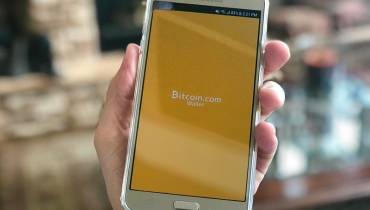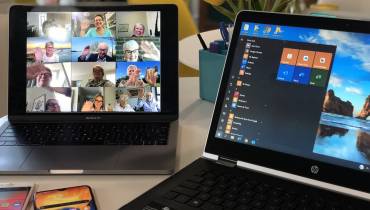Work-Life Balance Myths: Why the Digital Nomad Lifestyle Isn’t All About Travel and Endless Freedom

Picture this: a laptop perched on a sun-soaked beach, a smoothie in hand, and endless freedom to roam.
“This is often the kind of imagery used to sell the digital nomad lifestyle, but for many, this idealized vision is as mythical as a unicorn,” say the experts at Indexsy, a digital marketing firm specializing in SEO. “In reality, you can’t just sit by the pool all day - you do actually have to get work done.”
Digital nomads need intentional mental health strategies to prioritize balance over burnout. Here, we bust some work-life balance myths and reveals how digital nomads actually look after their mental health.
Digital Nomad Myths Busted
Myth #1: They Work From Beaches All Day
Imagine balancing a laptop on your knees with the sun glaring on your screen, sand sneaking into your keyboard, and a spotty Wi-Fi signal ruining your Zoom call. The “beach office” is a fantasy that rarely works in real life.
Myth #2: They’re Always On Vacation
Digital nomads may be free to travel, but they’re still working - that means juggling deadlines, client calls, and the occasional tech meltdown. “Balancing exploration with work responsibilities can be a serious challenge,” says Indexsy. “It’s actually way too easy to get caught up in work and end up not having the energy to actually explore this new place you’re in.”
Myth #3: It’s A Cheap Way To Live
Flights, accommodation, coworking memberships, and last-minute bookings can quickly blow through your budget. “The nomad life can be rewarding, but it’s rarely cheap,” says Indexsy.
Myth #4: They Don’t Have “Real” Jobs
Digital nomads often work in high-pressure fields like tech, design, writing, or consulting. Their careers are just as demanding as traditional office jobs—sometimes more, given the isolation and time zone challenges.
Myth #5: They Can Work Anytime, Anywhere
Digital nomads need a quiet, focused work environment just like anyone else, and keeping a consistent schedule is a necessity for staying in regular contact with co-workers and clients.
“Wi-Fi is also non-negotiable, so they can’t just go off for a three-month trek into the Himalayas,” says Indexsy.
Myth #6: Every Day Is Exciting:
Even in a new country, work is work. Not every day is a glamorous adventure; there are admin tasks, invoices, taxes, and awkward client emails to contend with, just like any job.
How Digital Nomads Actually Look After Their Mental Health
Among the strategies used by digital nomads to make sure their mental health is well-looked after and stays fit enough for their lifestyle are:
1. Find a “Third Place” That Feels Like Home (But Isn’t)
Sure, you’ve got your “home” (a hotel, an Airbnb, or a tent if you’re feeling adventurous) and your workspace (coworking spot, library, or kitchen table). But what about that third place?
“Your third place might be a cozy café, a bustling park, or a friendly local bar,” says Indexsy. “It’s the place where you can escape work mode and unwind without other pressures you might find around your temporary home.”
A third place gives you a spot that’s separate from everything else in your life, and it’s great for meeting locals or simply sipping coffee while people-watching.
2. Master the Art of Time-Zone Blocking
Being a digital nomad means you’re often juggling multiple time zones, but don’t let that mean you’re on call 24/7. Instead, design your workday around your energy levels, not your boss’ clock.
If mornings are your sweet spot, schedule your most demanding tasks then—even if it’s midnight back at HQ.
Use scheduling tools to communicate your availability, and make peace with the fact that not every email requires an instant reply. Boundaries are your best travel buddy!
3. Unplug with Digital Detox Days
Yes, you live for Wi-Fi, but when’s the last time you really disconnected? A digital detox day is like hitting refresh on your brain.
Spend a Sunday exploring your new location without Google Maps, leave your laptop zipped away, or curl up with an actual book.
The world won’t crumble if you miss a Slack notification, and you’ll feel recharged to dive back in come Monday.
4. Tap into Digital Nomad Support Networks
Feeling lonely on the road? You’re not alone. Loneliness is one of the most common struggles for digital nomads.
Luckily, there are communities everywhere—from Facebook groups to Nomad List meetups—full of like-minded wanderers who get it.
“You can share tips, swap stories, or just commiserate over tales of spotty Wi-Fi,” says Indexsy. “Bonus: you might make lifelong friends or find travel buddies who’ll keep your spirits high.”
5. Practice Micro-Mindfulness
Mindfulness doesn’t require a yoga mat and a Himalayan retreat. Micro-mindfulness is all about sneaking small moments of awareness into your day.
Stuck in line at immigration? Focus on your breathing. Waiting for a file to upload? Do a quick body scan to release tension.
These little moments can make a big difference, and help you stay grounded when life gets chaotic.
6. Embrace the “Slowmad” Lifestyle
Don’t feel rushed to check off your bucket list destinations. Instead, embrace the age of the “slowmad.”
Staying longer in one place lets you embed yourself deeper in the culture, avoid travel burnout, and even save money.
Plus, it gives you time to establish routines and build connections, turning your nomadic lifestyle into something that feels less like a whirlwind and more like a sustainable adventure.
In Conclusion
“When you start out, living the digital nomad lifestyle can feel like a dream, but without structure, it can quickly turn into chaos. Being able to work from anywhere is freeing, but it also comes with challenges—loneliness, burnout, and a lack of stability are real issues. This is why it’s necessary to find small ways to anchor yourself, whether that’s sticking to a morning routine, setting clear boundaries with work hours, or building a sense of community wherever you are.
“Structure isn’t the enemy of freedom,” says Indexsy. “Digital nomads who succeed long-term are the ones who create a framework to balance productivity with their emotional well-being. Sustainable digital nomadism is less about the glamorous Instagram photos and more about adopting habits that make you feel grounded, no matter where the road takes you.”

![9 Tips for Managing Your Online Writing Projects Efficiently [node:titile]](/sites/default/files/styles/thumbnail_rectangle/public/open-book-laptop-online-writing-tips.jpeg?itok=iq4PIT7b)


















